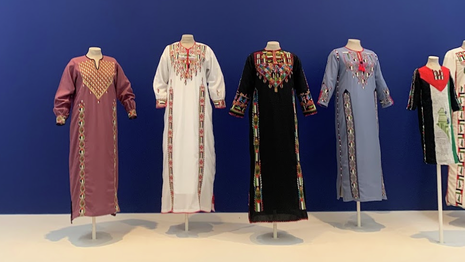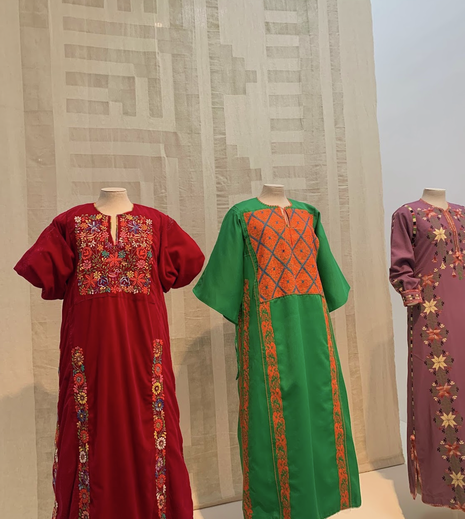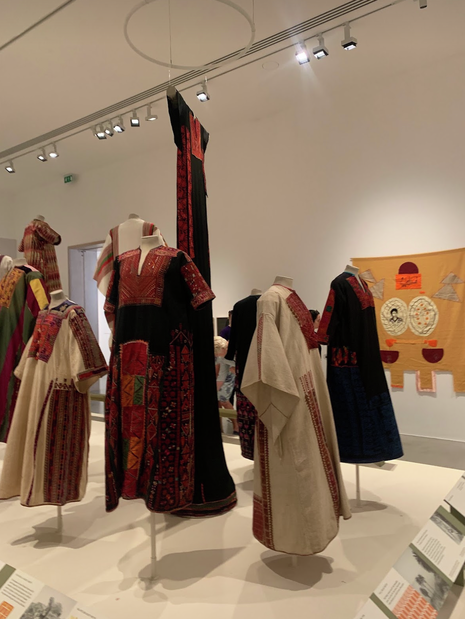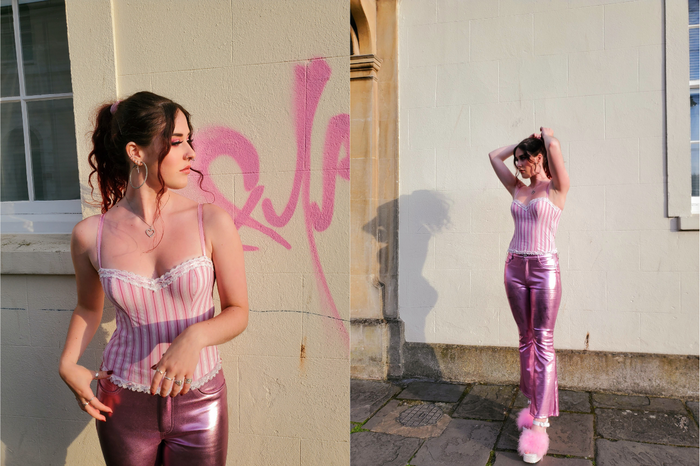Material Power: Palestinian Embroidery in Kettle’s Yard
Kettle’s Yard’s newest exhibit reminds us that fashion is always political

Clothes are one of the few constants in unpredictable circumstances. Whether we find ourselves in times of prosperity or uncertainty, we’re always wearing something. Kettle’s Yard’s newest exhibit, running until October 29th, harnesses the material power that clothing has to shape, respond, and curate identity in times of political instability.
“Through these garments we can start ‘to understand the big picture events in history’”
Palestinian embroidery is an ancient practice with a living history. Embroidery techniques such as Tatreez, dating back thousands of years, continue to be used by the Palestinian people today. It is through these garments that often played a functional and seemingly unremarkable role in everyday life, that curator Rachel Dedman argues we can start “to understand the big picture events in history”. Material Power is the first major UK exhibit dedicated to Palestinian embroidery in over thirty years. Across two rooms, the exhibition showcases 40 dresses and other embroidered objects, some on display for the first time, interspersed with pieces of modern art reflecting on Palestinian resistance throughout the 20th century.

Despite their intricate beauty and vibrant colours, the dresses on display are not representative of opulence or wealth. Embroidery was a rural woman’s craft in the early 20th century and the exhibition showcases both clothing items that women would have worn on a day to day basis and those designed for special occasions. Many of the features of the dresses are immensely practical, made with a life of labour in mind. Patches at the knees show how women would have sat to prepare food or work with clay and one dress has patches on either side so that its maker could breastfeed her children. At the same time, embroidered dresses were central to the most important rites of passage in a woman’s life: upon her wedding, the bride would embroider clothing and accessories to take into her marriage, items she would treasure throughout her life, frequently even being buried in them.
“The dresses are ‘like mosaics’, shaped by many hands in many changing contexts”
From the vantage point of our own culture in which clothing is a commodity and embroidery is a trend like any other, the longevity and continuous reincarnation of these dresses may seem unfamiliar. Embroidery is painstaking and meticulous craft, with one dress often being many months in the making. The final product is far from static, being passed on, mended, altered and gifted from one person to the next. One dress from Ramallah, originally made in the 1930s, was donated from one woman to another after she was expelled from her home in 1948. Resourcefully, the dress was enlarged to fit its new owner using the sacking of a bag of flour issued by the United Nations Relief and Works Agency. Rather than being worn by one person and then discarded, the dresses are, as Dedman describes, “like mosaics”, shaped by many hands in many changing contexts.

The story that Material Power seeks to tell is how this localised and personal craft became a vessel for national political protest. The 1948 Nakba (meaning ‘catastrophe’) in Arabic resulted in more than half of the Palestinian people being displaced and many killed, a crisis augmented in the Naksa (‘setback’) of 1967. In light of these upheavals, embroidery took on a symbolic meaning, being transformed into a motif of national revival and resistance. The ‘embroidered woman’ became a common feature of political imagery, harking back to an ideal of rural femininity. Rather than being solely representative, the dresses themselves embodied resistance. In 1987, when the First Intifada erupted in protest to Israeli occupation, women made ‘Intifada dresses’ expressing resistance by stitching maps of Palestine, designs in national colours and in the shape of important religious sites.
Political transformation and resistance is often expressed in sudden radical acts. The perspective that Material Power takes is that fashion and the act of making what one wears shines light on the often unacknowledged protracted quality of Palestinian resistance. The subtle powers of protest that these dresses wield make it leave us convinced that so often, it is the political that is personal.
Material Power is showing at Kettle’s Yard until the 29th of October 2023
 News / Cambridge students set up encampment calling for Israel divestment6 May 2024
News / Cambridge students set up encampment calling for Israel divestment6 May 2024 News / Cambridge postgrad re-elected as City councillor4 May 2024
News / Cambridge postgrad re-elected as City councillor4 May 2024 News / Proposed changes to Cambridge exam resits remain stricter than most7 May 2024
News / Proposed changes to Cambridge exam resits remain stricter than most7 May 2024 News / Some supervisors’ effective pay rate £3 below living wage, new report finds5 May 2024
News / Some supervisors’ effective pay rate £3 below living wage, new report finds5 May 2024 Fashion / Class and closeted identities: how do fits fit into our cultures?6 May 2024
Fashion / Class and closeted identities: how do fits fit into our cultures?6 May 2024






